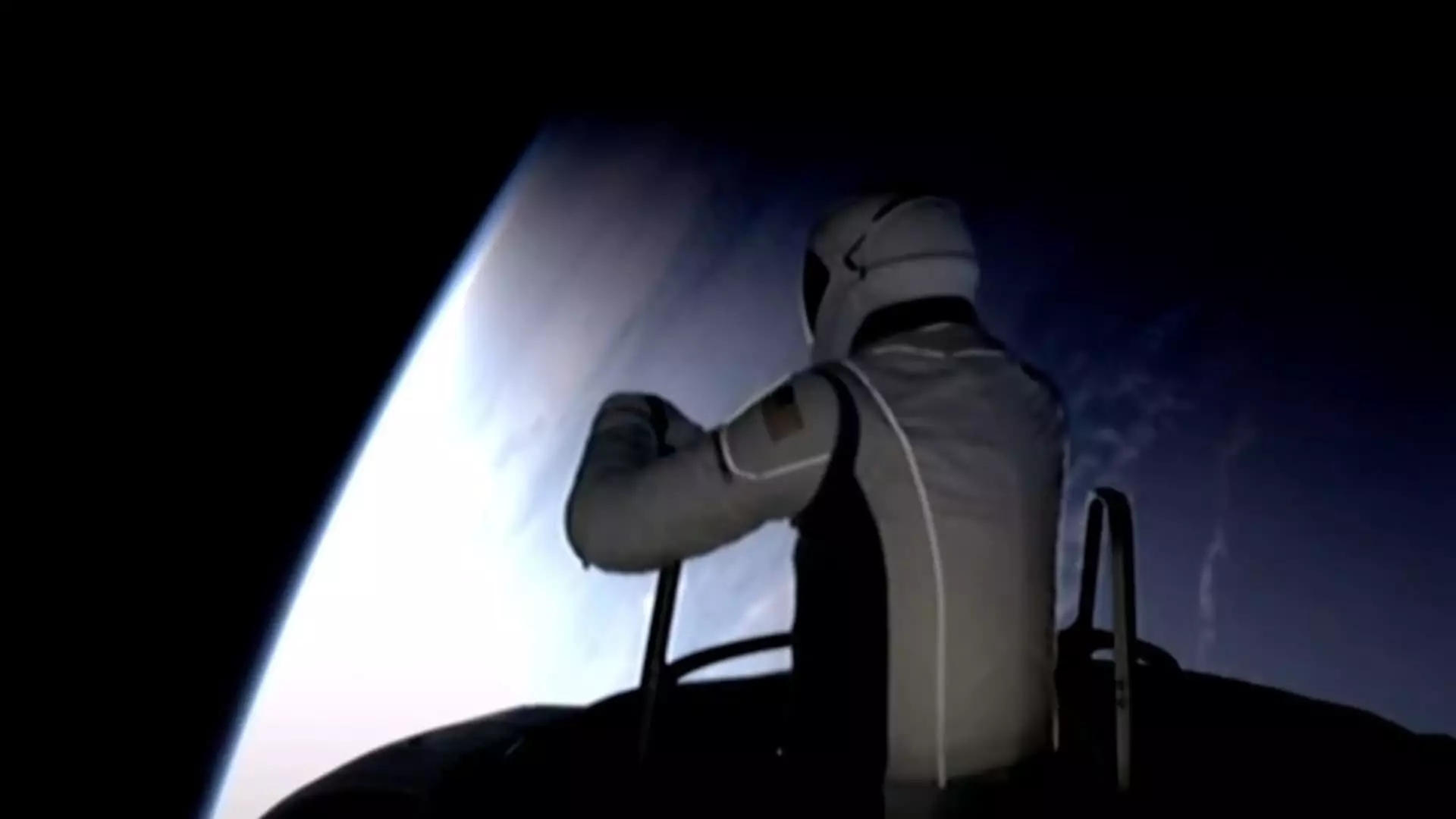In an unprecedented feat of human achievement, a SpaceX capsule containing four private citizens successfully splashed down off the coast of Florida at 3:36 a.m. ET on Sunday. This remarkable journey, dubbed the Polaris Dawn mission, heralded a new era of commercial spaceflight by achieving the world’s first all-civilian spacewalk. The mission’s completion marks an important chapter in the quest for expanded exploration beyond Earth, driven by a mix of entrepreneurial ambition and scientific curiosity.
The crew included billionaire entrepreneur Jared Isaacman, retired Air Force Lieutenant Colonel Scott “Kidd” Poteet, along with SpaceX engineers Sarah Gillis and Anna Menon. Upon their return, mission operators communicated the successful conclusion of the Polaris Dawn mission via radio, as recovery vessels approached the Crew Dragon capsule gently bobbing in the ocean. This five-day excursion demonstrated the increasing complexities and ambitions associated with commercial space travel. Notably, the mission was SpaceX’s fifth private endeavor, showcasing the company’s technological capabilities.
Perhaps the most groundbreaking element of the Polaris Dawn mission was the execution of the all-civilian spacewalk. Conducted on Thursday, Isaacman and Gillis ventured outside the Crew Dragon capsule attached to tethers, spending roughly ten minutes in the stark environment of outer space. This daring stunt was particularly ambitious considering the design of the capsule, which lacks a pressurized airlock. Consequently, all crew members donned spacesuits throughout the event, as the entire capsule underwent depressurization.
This spacewalk represents a monumental milestone in human spaceflight. Historically, spacewalks have been the exclusive domain of government-trained astronauts, typically involved in missions aimed at building or maintaining space stations, conducting repairs, or executing scientific experiments in orbit. The successful completion of an all-civilian spacewalk not only challenges prevailing notions of who can undertake such endeavors but also paves the way for similar missions in the future.
Earlier in the Polaris Dawn mission, the crew achieved a remarkable altitude of 870 miles above Earth’s surface—the highest since the last Apollo moon mission in 1972. Reaching this elevation allowed them to cross into the Van Allen radiation belts, a layer filled with high-energy particles trapped by Earth’s magnetosphere. Understanding how space radiation interacts with both crew and spacecraft is vital for planning future missions to the Moon and Mars, regions that present similar challenges regarding radiation exposure.
The implications of this research extend far beyond mere curiosity. SpaceX has indicated that findings from the Polaris Dawn mission could significantly influence the design and execution of future long-duration missions. This insight is crucial for ensuring astronaut safety on journeys that involve extended periods in the harsh conditions of outer space, particularly when traversing the inner and outer confines of the Van Allen belts.
Jared Isaacman, the founder and CEO of Shift4, is no stranger to space travel; he previously undertook the first all-civilian SpaceX mission to orbit in 2021 and has funded the Polaris Dawn venture through an undisclosed financial commitment. This mission is part of a broader Polaris program, which is envisioned to include two more flights. However, details regarding the financial structure and timelines for these subsequent missions remain confidential.
Isaacman’s engagement with space endeavors underscores the shifting paradigm of exploration. No longer solely the prerogative of government agencies, space exploration is becoming increasingly accessible to private citizens willing to embrace the risks and responsibilities that come with venturing into space. The Polaris Dawn mission initiates not just a daring journey into the cosmos but also inspires a new generation of space explorers and enthusiasts who may follow in these pioneering footsteps.
The unprecedented achievements of the Polaris Dawn mission are a testament to the evolving landscape of space exploration. By pushing the boundaries of what is possible, this mission serves as a beacon of what the future may hold, blending creativity, technology, and human spirit. As commercial space exploration continues to expand, so does the potential for discoveries that could transform our understanding of humanity’s place in the universe. The Polaris Dawn mission, with its groundbreaking milestones and future aspirations, effectively symbolizes the dawn of a new era in human exploration beyond our planet.

Leave a Reply